Georgia Tech Advances 500+ Technologies Toward Market for Real-World Impact
Aug 06, 2025 —
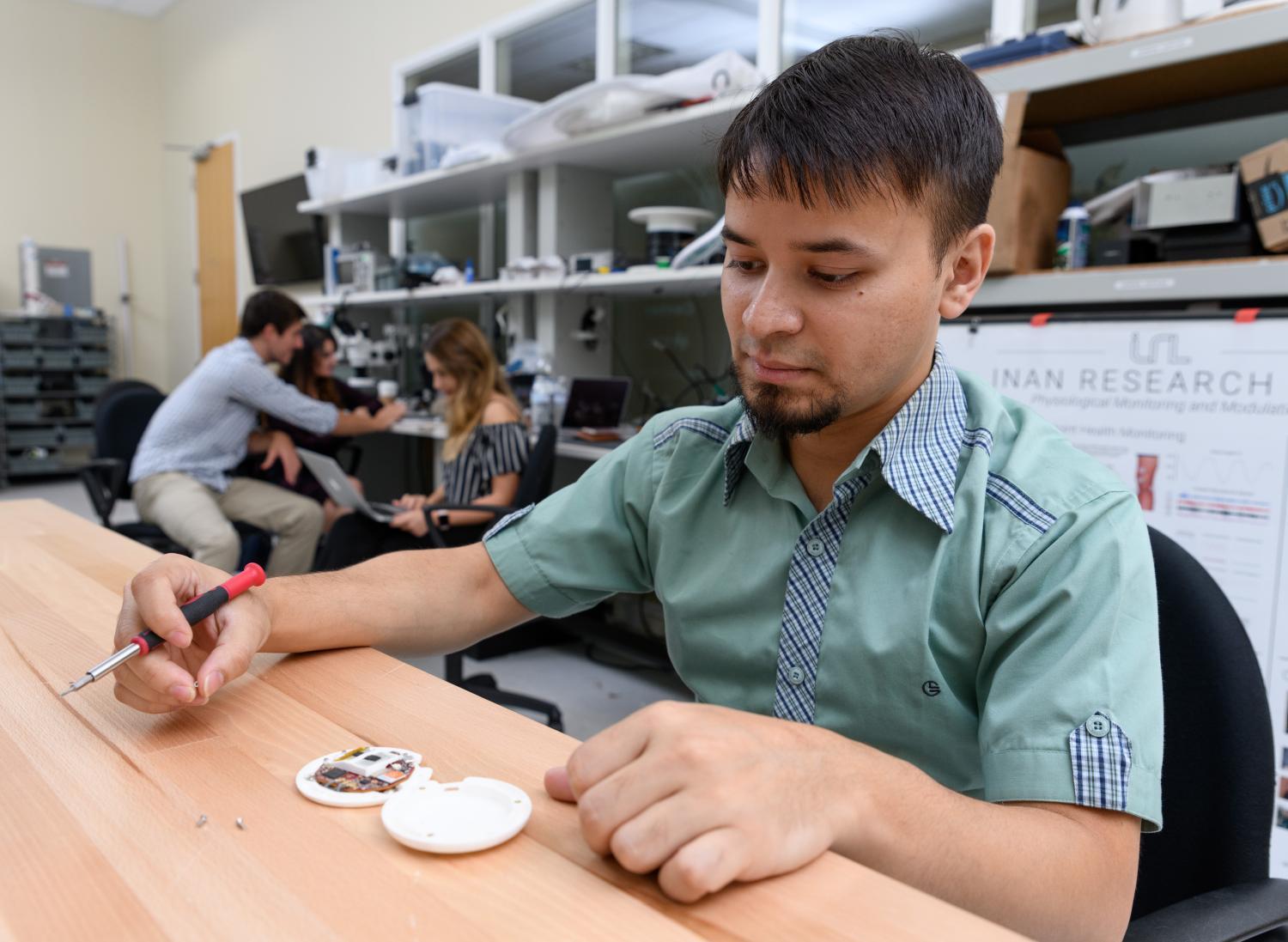
CardioTag, a device developed in Omer Inan’s lab, is now FDA-cleared and on the path to market through Cardiosense. Georgia Tech supported the technology’s transition from research to real-world application.
Georgia Tech has posted its strongest year ever in research commercialization, breaking multiple records for invention disclosures, issued patents, and licensed technologies — clear indicators of the Institute’s expanding role in delivering research-driven innovation to the marketplace.
“Invention is only the beginning. What sets Georgia Tech apart is our ability to move our ideas out of the lab and into the marketplace, where they can make a tangible impact on human life and contribute to our economy,” said Ángel Cabrera, president of Georgia Tech. “This year’s record results show that our researchers aren’t just pushing the boundaries of knowledge — they’re creating marketable solutions with the power to improve everyday lives.”
For fiscal year 2025, Georgia Tech reported:
- More than 460 new invention disclosures — a 30% increase over the previous year and the highest ever recorded by the Institute.
- 70 invention disclosures for the Georgia Tech Research Institute, marking a 70% increase year over year.
- A 210% increase in technologies licensed, and 140% in total licenses executed, reflecting unprecedented industry interest, with 65 licenses in total.
- 124 U.S. patents were issued, representing a 20% increase compared to the prior year.
- In 2024, Georgia Tech is in the top 15 public universities for U.S. utility patents filed, according to the National Academy of Inventors.
This momentum strengthens Atlanta’s position as one of the nation’s fastest-growing innovation economies. Georgia Tech plays a leading role in advancing the region’s ambition to become a top 5 tech hub by connecting world-class research with industry, supporting a thriving startup ecosystem, and fueling talent pipelines that serve emerging sectors like AI, cybersecurity, and clean energy.
Omer Inan, a Georgia Tech researcher and faculty member, has launched multiple companies with the support of the Institute’s commercialization resources. Cardiosense is a medical AI company that leverages sensors to provide better management of cardiovascular disease. Having just achieved FDA 501(k) clearance, its latest device — CardioTag — is the first multimodal, wearable sensor that simultaneously captures three cardio signals to provide noninvasive solutions for heart health.
"The med tech research I conduct at Georgia Tech delivers new technologies to keep patients with heart failure out of the hospital and enables them to monitor their health status at home,” said Inan. “Now, we are commercializing the technology our lab helped develop, so that this dream of improving the quality of care and life for millions of Americans with heart failure can one day become reality."
“As we look to solidify Georgia Tech’s status as a national innovation hub, we are moving research into the marketplace so it can truly make a difference in people’s lives,” said Raghupathy “Siva” Sivakumar, vice president of Commercialization and chief commercialization officer at Georgia Tech. “We are at a pivotal moment to put Atlanta on the map as a leader in research commercialization and have an opportunity to capitalize on our $1.4 billion in research expenditures that drive meaningful inventions, IP, and industry partnerships.”
To learn more about the licensing and commercialization process at Georgia Tech, visit licensing.research.gatech.edu.
Available for Media Interviews
Raghupathy "Siva" Sivakumar
Vice President of Commercialization and
Chief Commercialization Officer
Georgia Tech
Omer Inan
Professor and Regents’ Entrepreneur
School of Electrical and Computer Engineering at Georgia Tech
Media Contact:
Lauren Schiffman
PressFriendly
lauren@pressfriendly.com
Angela Barajas Prendiville
Director of Media Relations
Georgia Institute of Technology
aprendiville@gatech.edu
Tech Talent On and Off The Screen
Jul 11, 2025 —
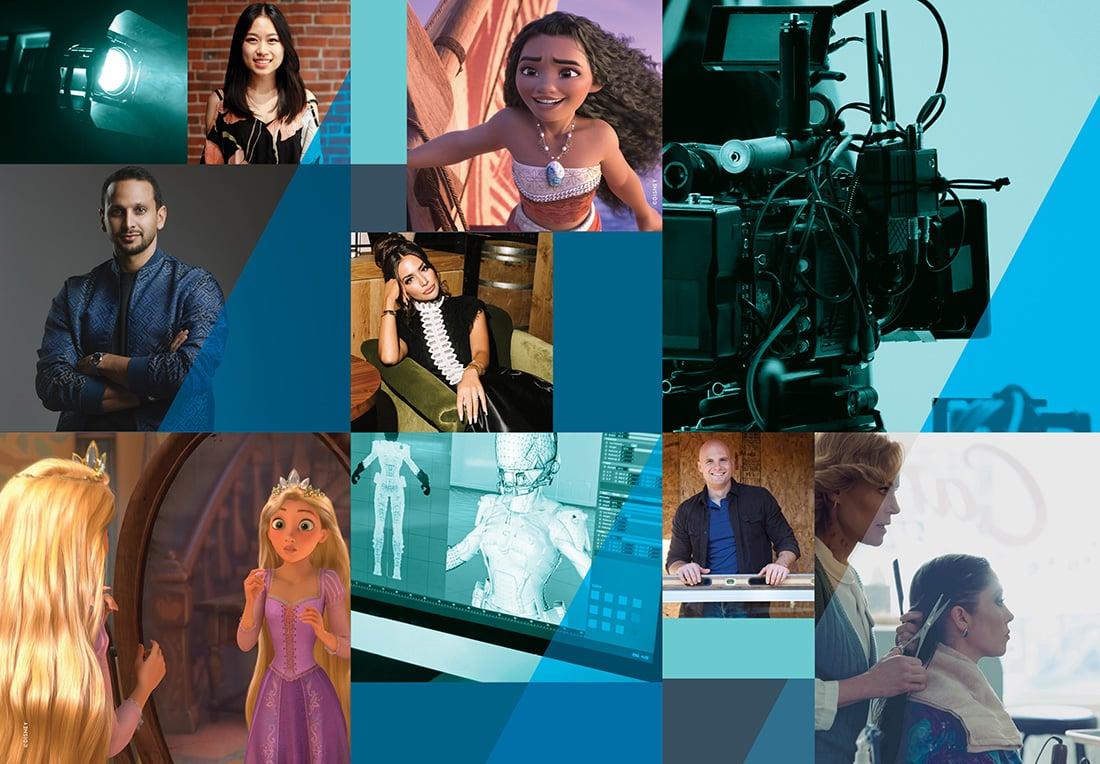
When film director Tamer Shaaban, CS 11, set out to create a commercial announcing Audi’s 2026 debut in Formula 1, he turned to Unreal Engine, a computer program normally used for developing video games. It was a creative decision that’s becoming more common. According to Jason Freeman, Tech’s interim associate vice provost for the arts, new technology is causing different forms of media and entertainment to converge. The ways in which video games and films are created are more similar than a decade ago, and 10 years from now, those methods will merge even more. Whether students plan to pursue a career in animation or one in film, they will need a common set of skills and the ability to respond to fast-changing technology. And Georgia Tech wants its students to be prepared for that.
“There’s an opportunity for us to better develop the workforce as this industry is evolving, and to become thought and research leaders in this space,” says Freeman. “To do this, we need a flagship academic program, something that becomes a hub for all that activity.”
For many years now, the arts have become increasingly visible at Georgia Tech. Rafael L. Bras, Tech’s former provost and Regents’ Professor, was an early champion of integrating the arts into the fabric of campus through works of public art and through collaborations between Georgia Tech students and artists-in-residence.
“Dr. Bras helped us to understand that all GT students, regardless of their discipline of study, needed to embrace creativity to be successful in their careers, and that the arts are essential in teaching our students to flex their creative muscle,” Freeman says.
In the fall of 2026, the Institute plans to launch a bachelor’s of science degree in Arts, Entertainment, and Creative Technologies. The new curriculum, which includes collaboration with departments across campus, focuses on artistic practice, technical innovation, and entrepreneurship. Tech also plans to develop the former Randall Brothers property on Marietta Street as an innovation hub called the Creative Quarter focused on the arts, creativity, design, and technology.
“We have had this reputation for so long as being just an engineering school,” Freeman says. “But bit by bit we’re making clear to the world that the arts are a very important part of our DNA here at Tech as well.”
Here, we feature nine alumni who prove just that (link to full Alumni Magazine article) >>
Two of the featured alumni, Heather Pritchett and Wayne Wooten, are GVU alumni.
Article originally published in the Georgia Tech Alumni Magazine, Vol. 101, No. 1, Spring 2025
AI in health care could save lives and money − but change won’t happen overnight
Jul 15, 2025 —

Imagine walking into your doctor’s office feeling sick – and rather than flipping through pages of your medical history or running tests that take days, your doctor instantly pulls together data from your health records, genetic profile and wearable devices to help decipher what’s wrong.
This kind of rapid diagnosis is one of the big promises of artificial intelligence for use in health care. Proponents of the technology say that over the coming decades, AI has the potential to save hundreds of thousands, even millions of lives.
What’s more, a 2023 study found that if the health care industry significantly increased its use of AI, up to US$360 billion annually could be saved.
But though artificial intelligence has become nearly ubiquitous, from smartphones to chatbots to self-driving cars, its impact on health care so far has been relatively low.
A 2024 American Medical Association survey found that 66% of U.S. physicians had used AI tools in some capacity, up from 38% in 2023. But most of it was for administrative or low-risk support. And although 43% of U.S. health care organizations had added or expanded AI use in 2024, many implementations are still exploratory, particularly when it comes to medical decisions and diagnoses.
I’m a professor and researcher who studies AI and health care analytics. I’ll try to explain why AI’s growth will be gradual, and how technical limitations and ethical concerns stand in the way of AI’s widespread adoption by the medical industry.
Read the complete article written by Professor Turgay Ayer in The Conversation >>
Published July 11, 2025.
Georgia Tech Researchers Aim to Increase Awareness of Emotion AI — By Letting People Try It
Jul 29, 2025 —
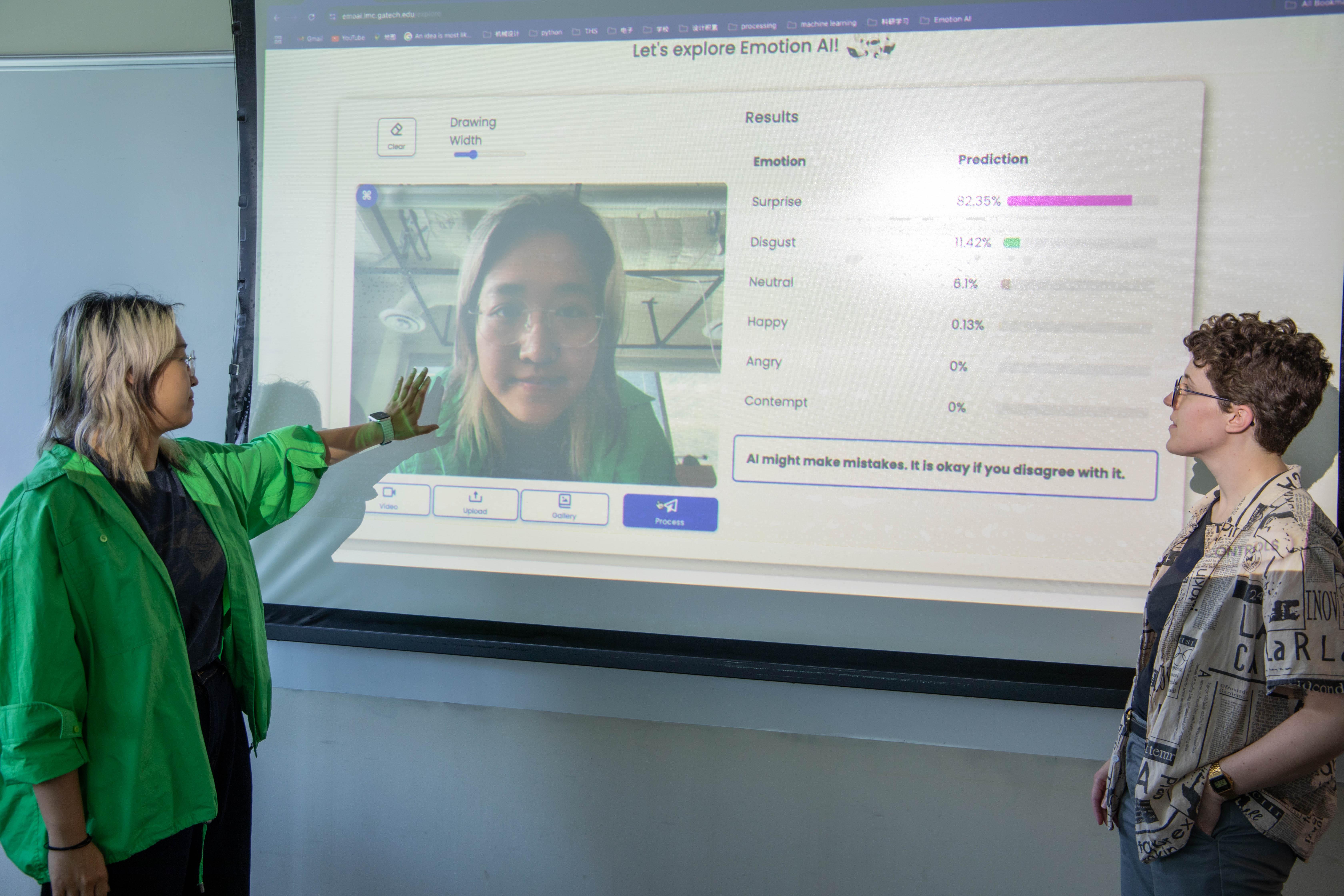
Xingyu Li (left) demonstrates the emotion AI system created for the team's workshops. The system has captured and analyzed her facial expression on the screen.
Can you tell what someone is feeling based on their facial expression?
Proponents of emotion AI — a type of artificial intelligence that analyzes facial expressions, text, voice, and other cues to infer emotions — say it can do just that.
Georgia Tech researcher Noura Howell, who received an NSF CAREER award to study emotion AI in 2024, said the technology has a number of shortfalls that can lead to inaccurate results. Like generative AI, emotion AI is also subject to bias, and its use raises ethical and privacy concerns.
Despite these shortcomings, Howell said emotion AI has quietly shaped decisions in areas like hiring, education, mental health, and public safety in recent years.
Yet most people don’t know it exists.
Howell and Digital Media Ph.D. students Xingyu Li and Alexandra “Allie” Teixeira Riggs in the School of Literature, Media, and Communication are working to change that. They held workshops across Atlanta over the last two months, giving participants a rare opportunity to try emotion AI for themselves — and then share their impressions, ideas, and concerns.
Stephanie N. Kadel
Ivan Allen College Communications
Photography @ GT Open Call Exhibition
Join us for a curated showcase of work by Georgia Tech student photographers. Selected for their vision, storytelling, and craft, these images explore a range of styles, subjects, and perspectives. From intimate portraits to bold visual experiments, the exhibition reflects the diverse voices and growing creative energy of our campus photography community.
Teachers Across Multiple States Prepare to Bring AI Lessons into the Classroom
Jul 25, 2025 —
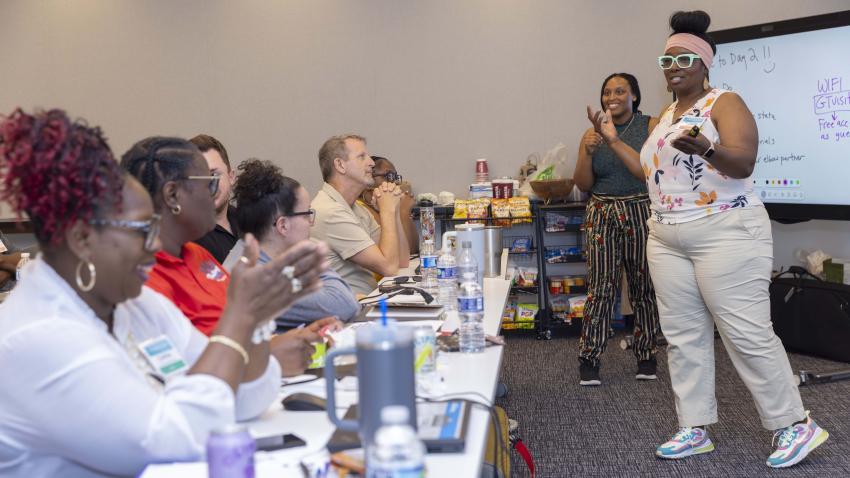
Teacher Training for AI Lessons
Eighty teachers from four states recently completed intensive training on how to teach artificial intelligence (AI) to middle schoolers, part of a growing initiative to make AI education more accessible and engaging for students across the country.
The AI4GA program, launched through a National Science Foundation grant and now supported by Google, continues to grow through expanded teacher training and curriculum development. It was initially led by Christina Gardner-McCune (University of Florida), Dave Touretzky (Carnegie Mellon University), and Bryan Cox (Georgia Tech). The curriculum was co-designed with educators and faculty, including Georgia Tech’s Judith Uchidiuno.
Now in its fifth teacher cohort, AI4GA is focused on upskilling educators, many of whom don’t have a background in computer science. Participants in the latest group included science, English, math, and social studies teachers from Georgia, Florida, Texas, and New York.
“We did a really good job with Georgia, so now we’re scaling up,” said Cox, Kapor Fellow in Georgia Tech’s Constellations Center for Education in Computing.
The curriculum introduced the cohort to machine learning, automated decision-making, natural language processing, and other foundational concepts in AI. They also learned about AI applications, including autonomous robots and self-driving vehicles.
Georgia Tech Arts Graduate Student Salon
Georgia Tech Arts is thrilled to launch our inaugural Georgia Tech Arts Graduate Student Salon. Salons will be an opportunity for arts-connected graduate students and postdocs from across the institute to meet one another, resource and insight-share, and experience some art together. Additionally, we'll have time to eat and chat, with prompts from Shamim Shoomali's new illustrated book about the Georgia Tech graduate student experience, Between Classes. You'll even have a chance to enter a raffle to receive a copy of her book!
Taiwan Looks to Strengthen U.S. Manufacturing Ties Through Georgia Tech Innovation Tour
Jul 25, 2025 — Atlanta, GA
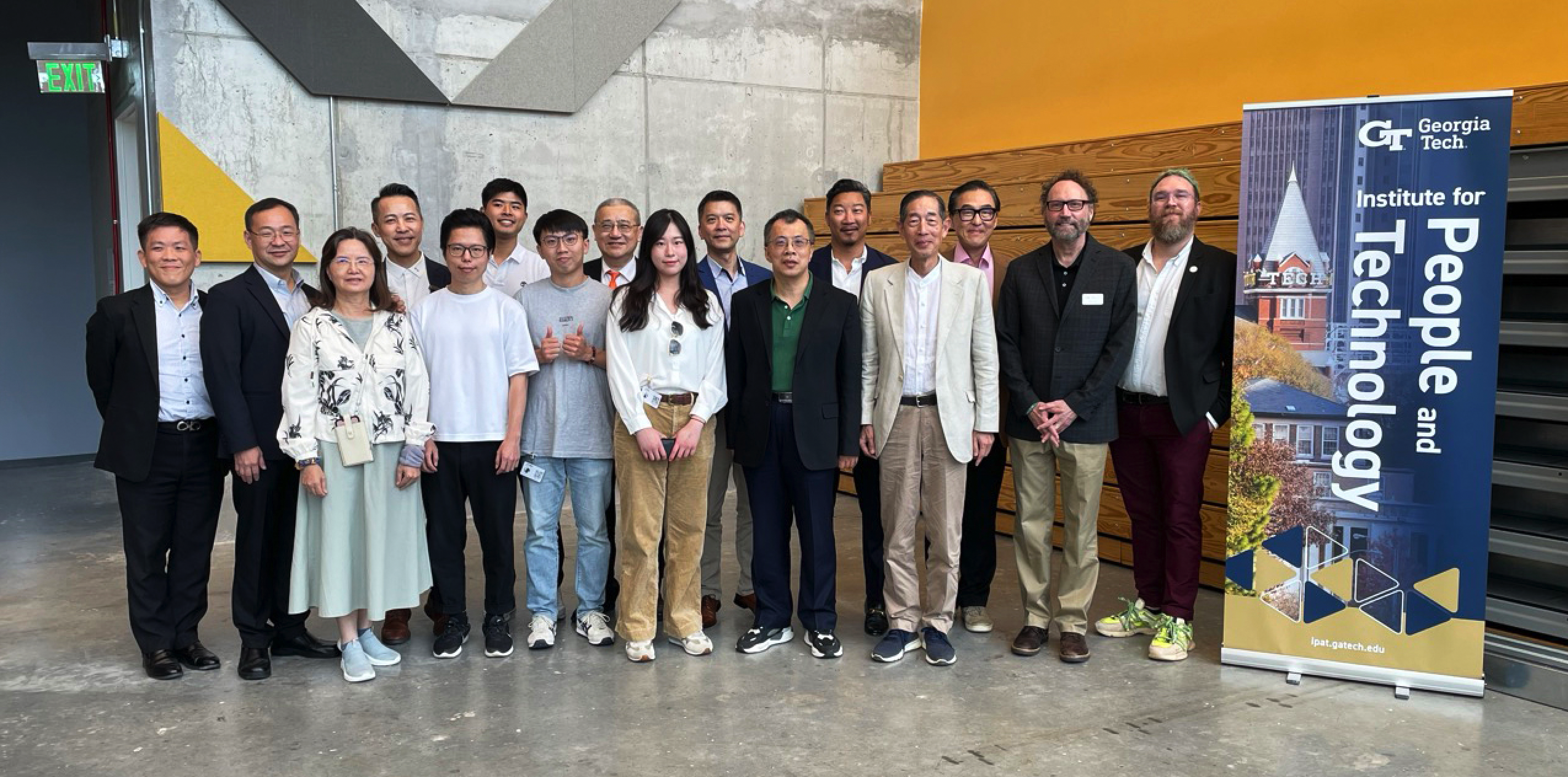
Taiwanese delegates (and three Georgia Tech students from Taiwan) meeting with the Institute for People and Technology in the Coda Building.
The Institute for People and Technology (IPaT) at Georgia Tech recently welcomed a Taiwanese delegation for a multi-day visit aimed at fostering international collaboration in technology, innovation, and economic development.
“This visit exemplifies IPaT’s expanding global initiatives,” said Michael Best, IPaT’s executive director and professor with Georgia Tech’s Sam Nunn School of International Affairs and School of Interactive Computing. “We aim to strengthen Georgia Tech’s relationships with select international universities and companies.”
The delegation, composed of Taiwanese leaders from academia, high-tech corporations, and national media, engaged in a robust agenda that showcased Georgia’s growing role in advanced manufacturing, robotics, and startup innovation.
Tunghai University, one of the visitors on this trip to Atlanta, is already working with Benoit Montreuil, Coca-Cola Material Handling & Distribution Chair and Professor in the H. Milton Stewart School of Industrial and Systems Engineering at Georgia Tech. The delegation had a chance to visit the Georgia Tech Supply Chain & Logistics Institute where Montreuil is the executive director.
The first day of the visit started with a briefing by Stella Xu, director at the Georgia Department of Economic Development, about Georgia’s Quick Start program — Georgia’s internationally acclaimed workforce training program that provides customized training free-of-charge to qualified new, expanding, and existing businesses. Next, the group learned about Georgia AIM (AI Manufacturing) – a statewide effort focused on workforce development and technology adoption for Georgia manufacturers.
Delegates also toured the advanced manufacturing pilot facility run by the Georgia Tech Manufacturing Institute where they observed cutting-edge AI and automation technologies in action.
A lunch hosted at Tech Square by the Georgia Department of Economic Development and IPaT provided an opportunity for informal dialogue and networking. The group then attended expert-led sessions at the Institute for Robotics and Intelligent Machines (IRIM). These included a robotics dialogue with Ye Zhao, assistant professor at the George Woodruff School of Mechanical Engineering, and a tour of the robotic research facilities with Aaron Young, associate professor in the Woodruff School of Mechanical Engineering.
The second day started with a visit to the Curiosity Lab in Peachtree Corners. This facility houses Georgia Tech’s Atrium, a specialized facility that offers hands-on workshops, dedicated research facilities, industry partnerships, networking opportunities and more, setting the stage for Georgia Tech learners and alumni to immerse themselves in real-world innovation and pave the way for future breakthroughs in technology and design.
The afternoon of the second day included a visit to Georgia Tech’s CREATE-X startup accelerator and a pitch from three student innovators who are working to launch a computer vision startup. The group then received an overview of IPaT’s mission and research which included learning about the IPaT Way, a comprehensive approach to people-centered technical innovation. IPaT is exploring new collaboration models to connect research and industry from the Asian region to Georgia Tech research, faculty, and global programs.
The itinerary also included a meeting with representatives from the Metro Atlanta and Columbus Chambers of Commerce, a tour of Hartsfield-Jackson International Airport and the Porsche U.S. Headquarters, and even an opportunity to attend the 2025 Major League Baseball All-Star Game.
The visit underscored Georgia Tech and IPaT’s role as a global hub for innovation and its commitment to fostering international partnerships that drive technological advancement and economic growth for the state of Georgia.
“Georgia Tech’s interdisciplinary and industry strengths are extremely impressive,” said CY Huang, chairman of the GeoAsia Foundation, investment banker, and expert in the semiconductor industry. “We look forward to jointly exploring limitless possibilities for collaboration with Taiwan.”
Walter Rich
GT Arts Community Salon for Faculty and Staff @ GT Library
Please join us for the first arts salon of the semester, co-hosted by GT Arts at the library.
Georgia Tech Arts Community Salons are monthly opportunities to gather in community, share insights, and get inspired. There will be opportunities to learn about the many arts-related efforts and arts resources around campus and to connect with fellow arts leaders at Tech.
New Dataset Makes Health Chatbots Like Google's MedGemma More Mindful of African Contexts
Jul 23, 2025 — Atlanta, GA
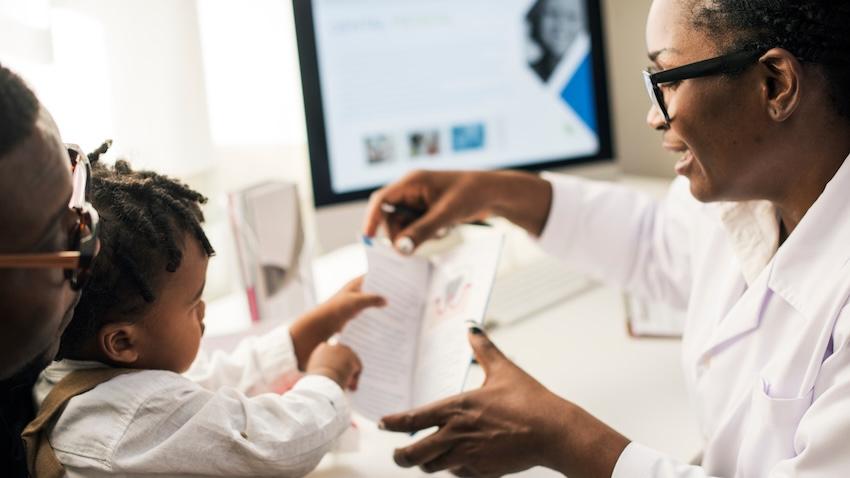
A groundbreaking new medical dataset is poised to revolutionize healthcare in Africa by improving chatbots’ understanding of the continent’s most pressing medical issues and increasing their awareness of accessible treatment options.
AfriMed-QA, developed by researchers from Georgia Tech and Google, could reduce the burden on African healthcare systems.
The researchers said people in need of medical care file into overcrowded clinics and hospitals and face excruciatingly long waits with no guarantee of admission or quality treatment. There aren’t enough trained healthcare professionals available to meet the demand.
Some healthcare question-answer chatbots have been introduced to treat those in need. However, the researchers said there’s no transparent or standardized way to test or verify their effectiveness and safety.
The dataset will enable technologists and researchers to develop more robust and accessible healthcare chatbots tailored to the unique experiences and challenges of Africa.
One such new tool is Google’s MedGemma, a large-language model (LLM) designed to process medical text and images. AfriMed-QA was used for training and evaluation purposes.
AfriMed-QA stands as the most extensive dataset that evaluates LLM capabilities across various facets of African healthcare. It contains 15,000 question-answer pairs culled from over 60 medical schools across 16 countries and covering numerous medical specialties, disease conditions, and geographical challenges.
Tobi Olatunji and Charles Nimo co-developed AfriMed-QA and co-authored a paper about the dataset that will be presented at the Association for Computational Linguistics (ACL) conference next week in Vienna.
Olatunji is a graduate of Georgia Tech’s Online Master of Science in Computer Science (OMSCS) program and holds a Doctor of Medicine from the College of Medicine at the University of Ibadan in Nigeria. Nimo is a Ph.D. student in Tech’s School of Interactive Computing, where he is advised by School of IC professors Michael Best and Irfan Essa.
Focus on Africa
Nimo, Olatunji, and their collaborators created AfriMed-QA as a response to MedQA, a large-scale question-answer dataset that tests the medical proficiency of all major LLMs. That includes Google’s Gemini, OpenAI’s ChatGPT, and Anthropic’s Claude, among others.
However, because MedQA is trained solely on the U.S. Medical License Exams, Nimo said it is not adequate to serve patients in underdeveloped African countries nor the Global South at-large.
“AfriMed-QA has the contextualized and localized understanding of African medical institutions that you don’t get from Med-QA,” Nimo said. “There are specific diseases and local challenges in our dataset that you wouldn't find in any U.S.-based dataset.”
Olatunji said one problem African users may encounter using LLMs trained on MedQA is that they may advise unfeasible treatments or unaffordable prescription drugs.
“You consider the types of drugs, diagnostics, procedures, or therapies that exist in the U.S. that are quite advanced. These treatments are much more accessible, for example in the US, and Europe,” Olatunji said. “But in Africa, they’re too expensive and many times unavailable. They may cost over $100,000, and many people have no health insurance. Why recommend such treatments to someone who can’t obtain them?”
Another problem may be that the LLM doesn’t take a medical condition seriously if it isn’t predominant in the U.S.
“We tested many of these models, for example, on how they would manage sickle-cell disease signs and symptoms, and they focused on other “more likely” causes and did not rank or consider sickle cell high enough as a possible cause,” he said. “They, for example, don’t consider sickle-cell as important as anemia and cancer because sickle-cell is less prevalent in the U.S.”
In addition to sickle-cell disease, Olatunji said some of the healthcare issues facing Africa that can be improved through AfriMed-QA include:
- HIV treatment and prevention
- Poor maternal healthcare
- Widespread malaria cases
- Physician shortage
- Clinician productivity and operational efficiency
Google Partnership
Mercy Asiedu, senior author of the AfriMed-QA paper and research scientist at Google Research, has dedicated her career to improving healthcare in Africa. Her work began as a Ph.D. student at Duke University, where she invented the Callascope, a groundbreaking non-invasive tool for gynecological examinations
With her current focus on democratizing healthcare through artificial intelligence (AI), Asiedu, who is from Ghana, helped create a research consortium to develop the dataset. The consortium consists of Georgia Tech, Google, Intron, Bio-RAMP Research Labs, the University of Cape Coast, the Federation of African Medical Students Association, and Sisonkebiotik.
Sisonkebiotik is an organization of researchers that drives healthcare initiatives to advance data science, machine learning, and AI in Africa.
Olatunji leads the Bio-RAMP Research Lab, a community of healthcare and AI researchers, and he is the founder and CEO of Intron, which develops natural-language processing technologies for African communities.
In May, Google released MedGemma, which uses both the MedQA and Afri-MedQA datasets to form a more globally accessible healthcare chatbot. MedGemma has several versions, including 4-billion and 27-billion parameter models, which support multimodal inputs that combine images and text.
“We are proud the latest medical-focused LLM from Google, MedGemma, leverages AfriMed-QA and improves performance in African contexts,” Asiedu said.
“We started by asking how we could reduce the burden on Africa’s healthcare systems. If we can get these large-language models to be as good as experts and make them more localized with geo-contextualization, then there’s the potential to task-shift to that.”
The project is supported by the Gates Foundation and PATH, a nonprofit that improves healthcare in developing countries.
